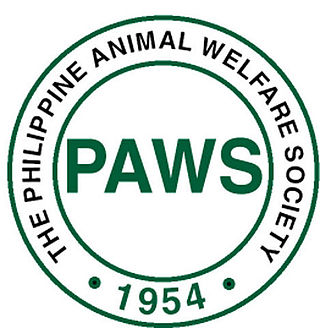
An animal shelter or pound is a place where stray, lost, abandoned or surrendered animals – mostly dogs and cats – are housed. The word "pound" has its origins in the animal pounds of agricultural communities, where stray livestock would be penned or impounded until they were claimed by their owners.

Trap–neuter–return (TNR), also known as trap–neuter–release, is a controversial method that attempts to manage populations of feral cats. The process involves live-trapping the cats, having them neutered, ear-tipped for identification, and, if possible, vaccinated, then releasing them back into the outdoors. If the location is deemed unsafe or otherwise inappropriate, the cats may be relocated to other appropriate areas. Ideally, friendly adults and kittens young enough to be easily socialized are retained and placed for adoption. Feral cats cannot be socialized, shun most human interaction and do not fare well in confinement, so they are not retained. Cats suffering from severe medical problems such as terminal, contagious, or untreatable illnesses or injuries are often euthanized.
In some countries there is an overpopulation of pets such as cats, dogs, and exotic animals. In the United States, six to eight million animals are brought to shelters each year, of which an estimated three to four million are subsequently euthanized, including 2.7 million considered healthy and adoptable. Euthanasia numbers have declined since the 1970s, when U.S. shelters euthanized an estimated 12 to 20 million animals. Most humane societies, animal shelters and rescue groups urge animal caregivers to have their animals spayed or neutered to prevent the births of unwanted and accidental litters that could contribute to this dynamic.
A no-kill shelter is an animal shelter that does not kill healthy or treatable animals based on time limits or capacity, reserving euthanasia for terminally ill animals, animals suffering poor quality of life, or those considered dangerous to public safety. A no-kill shelter uses many strategies to promote shelter animals; to expanding its resources using volunteers, housing and medical protocols; and to work actively to lower the number of homeless animals entering the shelter system. Up to ten percent of animals could be killed in a no-kill shelter and still be considered a no-kill shelter.
The Blue Cross of India (BCI) is an animal welfare charity based in Chennai, India. It was established in 1959 by Captain V. Sundaram, his wife Usha and their three children, in Chennai. The society was formally registered in 1964 under the Societies Registration Act. The nine signatories to the Articles and Memorandum of Association were Captain V. Sundaram, Usha Sundaram, S. Chinny Krishna, Suresh Sundaram, S. Vijayalakshmi, D. Daivasigamony, Kamakshi Krishnamoorthi, Sundari Nataraj and T. V. Chandrasekhar. It is now one of the country's largest animal welfare organisations. It runs several animal welfare programs including animal rights awareness.

The Philippine Animal Welfare Society (PAWS) is a volunteer-based, non-government organization whose goal is to prevent animal cruelty through education, animal sheltering and advocacy, based in Quezon City, Philippines. It was founded in 1954 by Muriel Jay. PAWS believes that the creation of a more peaceful society starts with the widening of mankind's circle of compassion which includes animals, thereby envisions a nation that respects animals, practices responsible pet ownership and protects wildlife. The volunteer-based organization rehabilitates these animals in the hope of finding them new homes and a second chance at a good life. PAWS does not take in pets of other people, but only victims of cruelty or neglect where the animal offenders are charged with violation of the Animal Welfare Act in court.

Rabies is a viral disease that causes encephalitis in humans and other mammals. It was historically referred to as hydrophobia due to the symptom of panic when presented with liquids to drink. Early symptoms can include fever and abnormal sensations at the site of exposure. These symptoms are followed by one or more of the following symptoms: nausea, vomiting, violent movements, uncontrolled excitement, fear of water, an inability to move parts of the body, confusion, and loss of consciousness. Once symptoms appear, the result is virtually always death. The time period between contracting the disease and the start of symptoms is usually one to three months but can vary from less than one week to more than one year. The time depends on the distance the virus must travel along peripheral nerves to reach the central nervous system.

Street dogs, commonly soi dogs in Thailand, are ownerless, free-ranging dogs. These dogs are sometimes rounded up and sold as meat in Vietnam and China. It is estimated that there are about 8.5 million dogs in Thailand, of which about 730,000 are abandoned by their owners. Bangkok alone is estimated to have from 100,000 to 300,000 street dogs. Few have been vaccinated against canine diseases.
The prevalence of rabies, a deadly viral disease affecting mammals, varies significantly across regions worldwide, posing a persistent public health problem.
The 2009 Shaanxi dog-free zone is a goal by the government of Shaanxi Province in north central People's Republic of China (PRC) to begin killing large number of dogs as part of a campaign to stop the spread of rabies in the region via stray dogs attacking humans.
Abandoned pets are companion animals that are either inadvertently or deliberately abandoned by their owners, by either dumping the animals on the streets, leaving them alone in a vacant property, or relinquishing them at an animal shelter.

The city of Moscow, Russia hosts a large population of free-ranging dogs. Many operate in packs and have become accustomed to seeking food from passersby. Some of them who frequent or inhabit the subway have attracted international attention for learning how to use the trains to commute between various locations. The most famous Muscovite street dog is Laika who ended up being the first one of the first animals in space and the first to orbit the Earth.

A free-ranging dog is a dog that is not confined to a yard or house. Free-ranging dogs include street dogs, village dogs, stray dogs, feral dogs, etc., and may be owned or unowned. The global dog population is estimated to be 900 million, of which around 20% are regarded as owned pets and therefore restrained.

The Indian pariah dog, also known as the Indian native dog, INDog, Nadan,South Asian pye dog, Desi Kutta, and Neri Kutta, is a landrace of dog native to the Indian subcontinent. They have erect ears, a wedge-shaped head, and a curved tail. It is easily trainable and often used as a guard dog and police dog. This dog is an example of an ancient group of dog known as pye-dogs. There is archaeological evidence that the dog was present in Indian villages as early as 4,500 years ago.

The KAT Centre Nepal is a nonprofit organization in Nepal. The KAT Centre Nepal’s goals are to create a healthy, sustainable street dog population, reduce animal cruelty, and eliminate rabies, around Kathmandu, Nepal.
In Bucharest – the capital city of Romania – the problem of stray dogs has been acknowledged for decades. The number of stray dogs has been reduced drastically since 2014, following the death of a four-year-old child who was attacked by a dog. In 2015, the Bucharest City Hall stated that over 51,200 stray dogs were captured between October 2013 and January 2015, with more than half being euthanized, about 23,000 being adopted, and 2,000 still residing in the municipality's shelters. The issue has not only been a heated subject of debate in Bucharest, but also on a nationwide scale.

Rabies is a viral disease that exists in Haiti and throughout the world. It often causes fatal inflammation of the brain in humans and other mammals, such as dogs and mongooses in Haiti. The term "rabies" is derived from a Latin word that means "to rage"; rabid animals sometimes appear to be angry. Early symptoms can include fever and tingling at the site of exposure, followed by one or more of the following symptoms: violent movements, uncontrolled excitement, fear of water, an inability to move parts of the body, confusion, and loss of consciousness. Once symptoms appear, death is nearly always the outcome. The time period between contracting the disease and showing symptoms is usually one to three months; however, this time period can vary from less than a week to more than a year. The time between contraction and the onset of symptoms is dependent on the distance the virus must travel to reach the central nervous system.

The Sarawak rabies outbreak is an ongoing rabies outbreak in the state of Sarawak in Malaysia. Until 6 December 2022, 49 confirmed rabies cases and 44 deaths have been reported.

Animal welfare and rights in Goa refers to campaigns undertaken in the region of Goa, on the west coast of India, which has been on the rise in recent years. Goa is a popular tourist destination, visited by those from abroad and the rest of India, and concerns over animal rights has been built up both by local and visitor campaigns over the same.
India has the highest number of attacks by stray dogs in the world. In Indian cities, stray dog attacks are considered a danger to children and old people. India has 36% of all rabies deaths in the world. India also has the largest number of stray dogs in the world, along with the highest cases of rabies deaths. Most rabies deaths are unreported. In compliance with Animal Birth Control rules, 2001, stray dogs may not be killed, only sterilized. Municipalities lack the money to sterilize stray dogs. Most Indians believe that stray dog attacks are common in their area and that the municipality does not take the necessary steps to reduce dog bites. Uttar Pradesh, Odisha, Maharashtra has the highest number of stray dogs. Tamil Nadu, Maharashtra, West Bengal has the highest number of dog bites. A law created in 2001 to save stray dogs has resulted in an increase in stray dogs, as the law prevents the killing of any stray dog. Small babies are mauled to death by stray dogs in India. The Bihar government found that stray dog bites are the third largest cause of disease in the state.






















